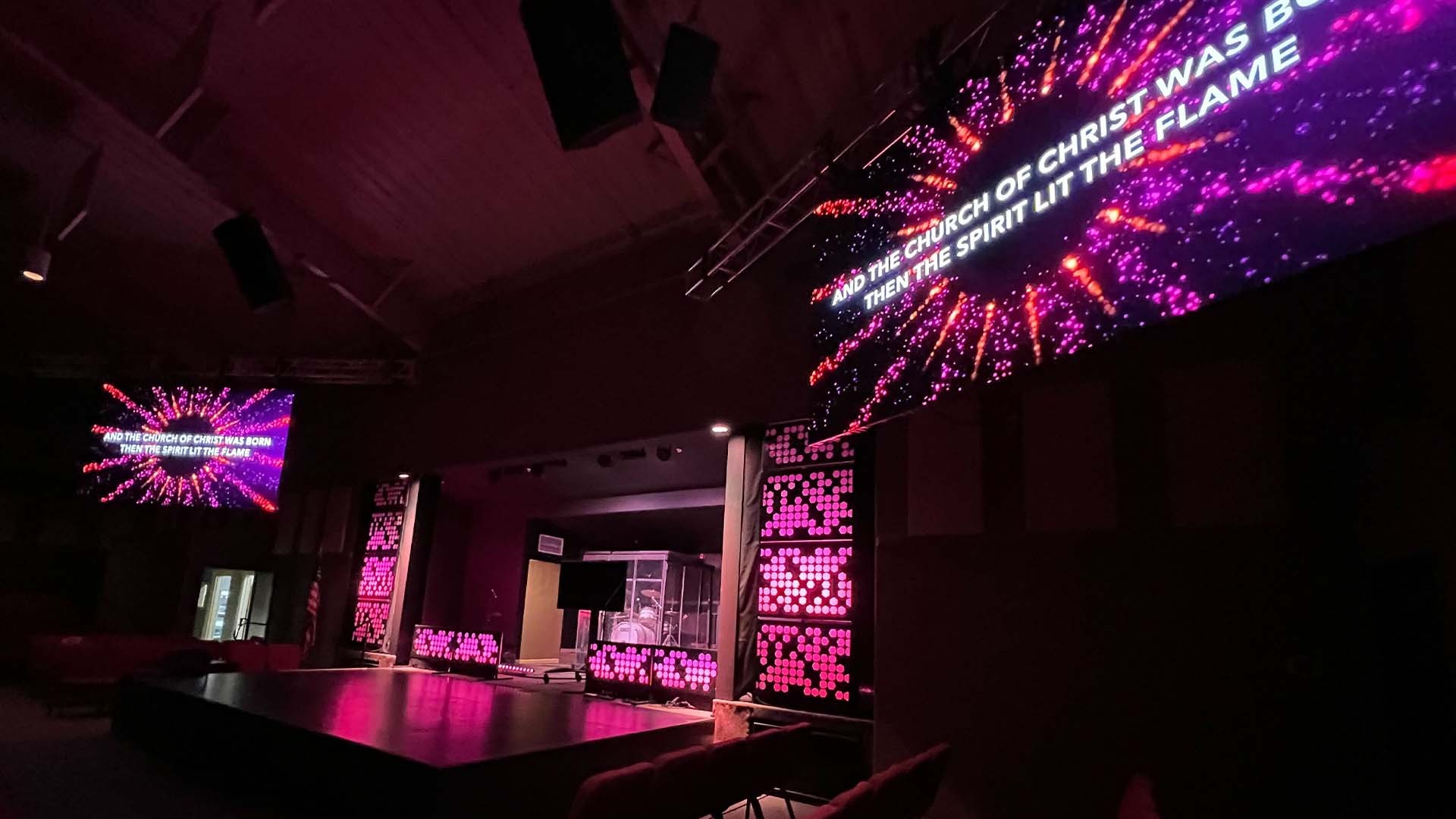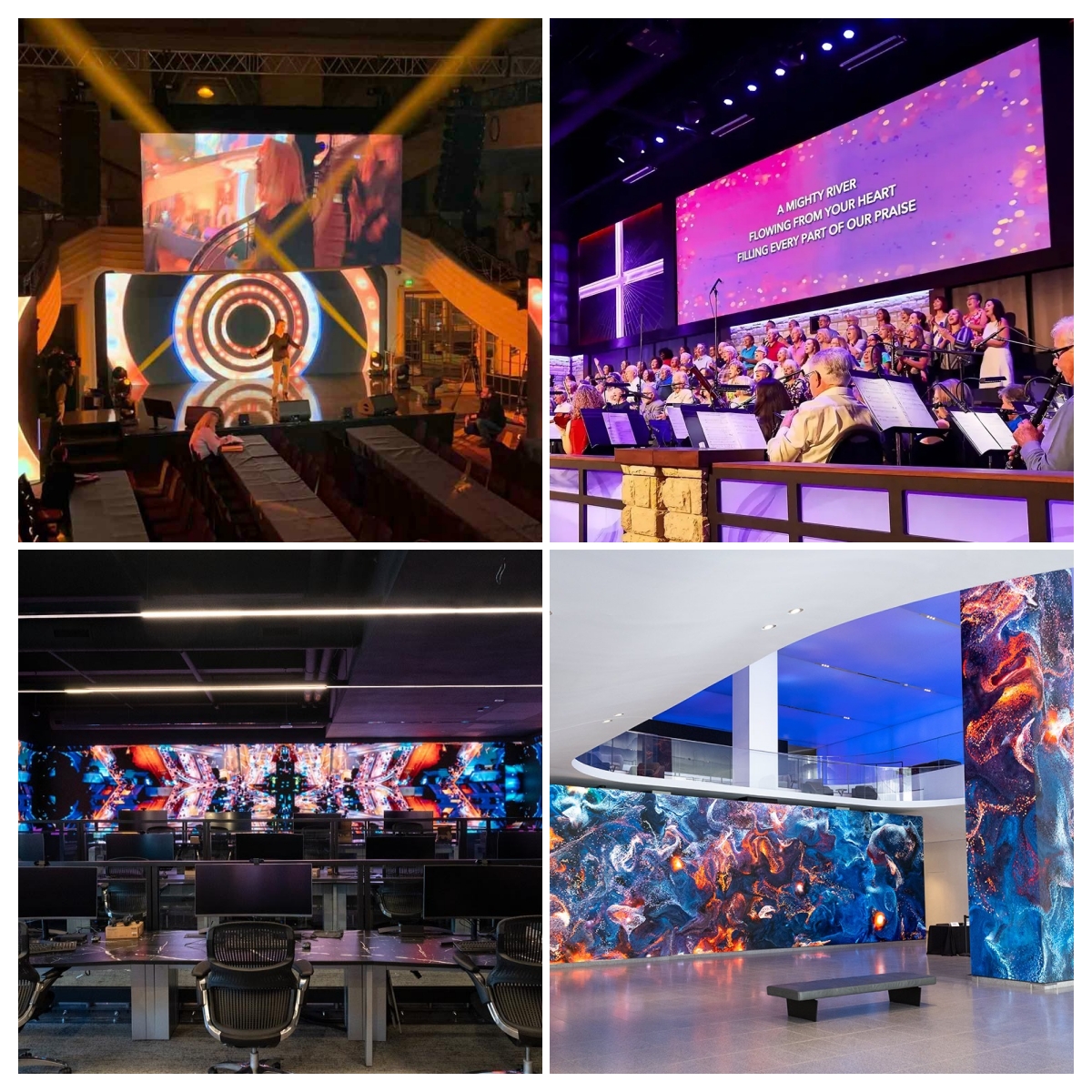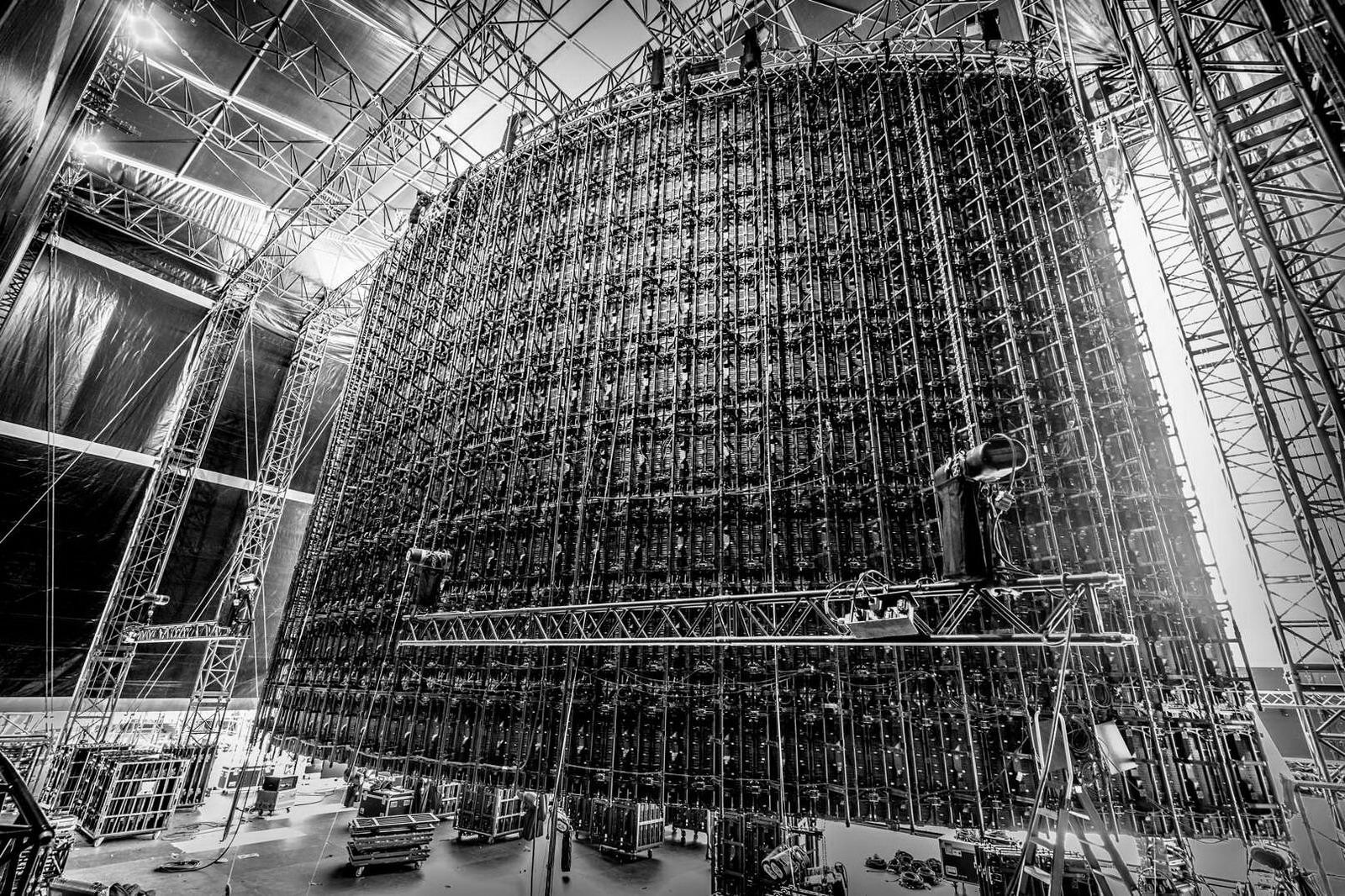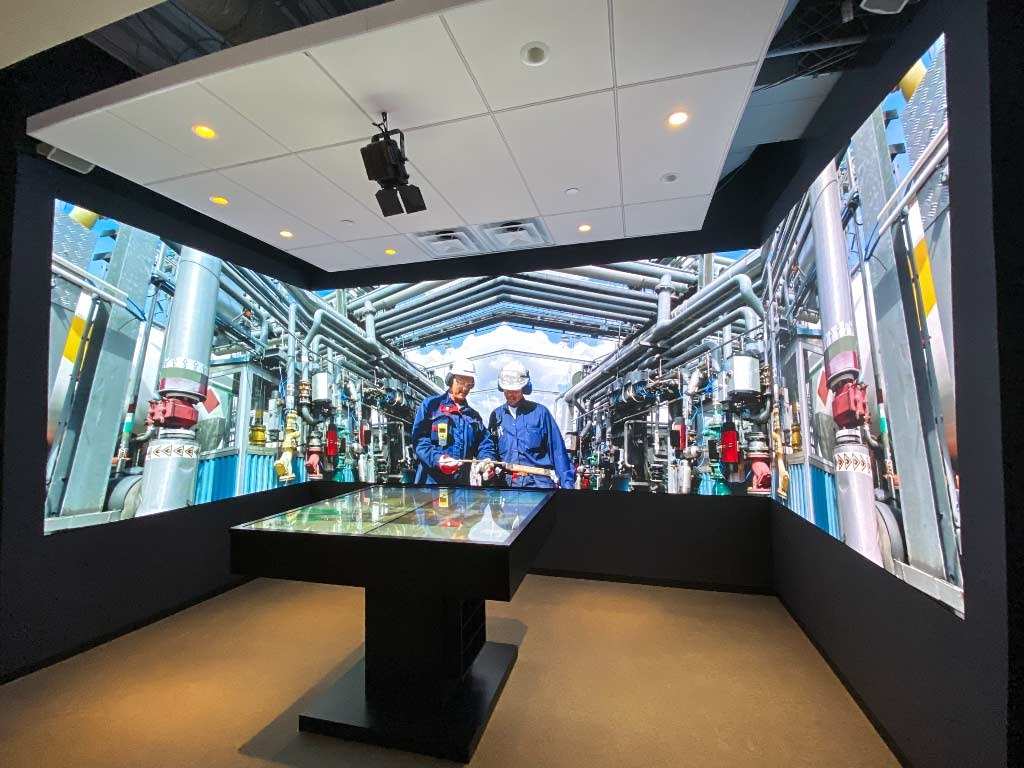1. Introduction
In recent years, LED display screens have witnessed a rapid development trend in the commercial field, and their application range has been continuously expanding. For various events you are preparing, making good use of LED screen display technology can significantly enhance the visual impact, attract more audience attention, and create favorable conditions for the success of events at the marketing level, making your events stand out and thus achieving marketing results.
2. Why Will You Need LED Screen for Events?
Well, for some customers who are considering choosing LED screen for events, they often hesitate between LED display screens, projectors and LCD display screens.
If you want to solve this problem, we need to talk about the unique advantages of LED display screens compared to other screens. These advantages are quite convincing.
Firstly, it’s easy to maintain. LED screen basically don’t require much maintenance, and many of them support front maintenance, which is very convenient to operate.
Secondly, it’s about customizability. LED display screens come in various shapes and sizes and can be customized according to the event venue and specific application scenarios to meet various personalized needs.
In terms of resolution, LED display screens perform excellently. Their maximum resolution is higher than that of most LCD display screens and projectors, and they can even reach the ultra-high-definition level of 4K or even 8K.
When it comes to the viewing angle, projectors have specific requirements for angles and spaces to project clear images, while LED display screens are quite different. Their viewing angles can reach as wide as 160 degrees.
As for image quality, LED display screens are even better. Compared with LCD display screens and projectors, they can provide higher-quality pictures, with a refresh rate of 3840Hz and a grayscale of 16 bits.
Besides, there are more advantages…
For this reason, in numerous events, especially those that require creative designs or need to meet the requirement of a large number of people watching simultaneously, the performance of LED display screens is far better than that of projectors and LCD display screens.

3. 10 LED Screen for Events Ideas!
Outdoor Concerts
LED screens are a staple in outdoor concerts. They display live performances of musicians, enabling those far from the stage to see clearly. Visual effects that match the music tempo are also shown, creating an exciting atmosphere for the audience.
Sports Stadiums
In sports stadiums, LED screens are used for showing game replays, player statistics, and advertisements. They enhance the viewing experience by providing details that might be missed during the live action.
Corporate Events
Corporate events use LED screens for presentations, displaying company logos, and playing promotional videos. They ensure that everyone in the venue can see the content clearly, whether it’s a speech or a new product showcase.
Trade Shows
At trade shows, LED screens on booths attract visitors by presenting product features, demos, and company information. The bright and clear displays make the booth more eye – catching among numerous competitors.
Fashion Shows
Fashion shows utilize LED screens to display close – up details of clothing as models walk the runway. Design inspirations and brand names can also be shown, adding to the glamour of the event.
Wedding Receptions
LED screens at wedding receptions often play photo slideshows of the couple’s journey. They can also display live feeds of the ceremony or romantic animations during the celebration.
Award Ceremonies
Award ceremonies use LED screens to present nominee information, show clips of their works, and display the winner announcements. This makes the event more engaging and grand.
School Graduation Ceremonies
In school graduation ceremonies, LED screens can show the names and photos of graduating students, along with live feeds of the stage. They add a modern touch to the traditional event.
Church Services
Churches sometimes use LED screen for church to display hymn lyrics, religious scriptures, and live feeds of the sermon. This helps the congregation follow along more easily.
Community Festivals
Community festivals use LED screens to display event schedules, performances, and local announcements. They keep the attendees informed and entertained throughout the festival.

4. Event LED Screen Price
Resolution
The higher the resolution, the higher the price usually is. A higher resolution means there are more pixels in a unit area, and the image is clearer and more detailed. For example, Fine pitch LED display (such as P1.2, P1.5), the price per square meter can reach tens of thousands of yuan because they can present nearly perfect picture quality, which is suitable for high – end events with demanding display effect requirements, such as large – scale international conferences, top – notch commercial performances, etc.; while relatively low – resolution displays like P4, P5, the price per square meter may be in the range of thousands of yuan, and the picture quality can also meet the requirements of general events outside a certain viewing distance, such as small – scale indoor parties, community activities, etc.
Dot Pitch
Dot pitch is the distance between adjacent pixels. It is closely related to resolution and has an important impact on the price. The smaller the dot pitch, the more pixels can be accommodated in a unit area, and the higher the price. Generally speaking, LED displays with a smaller dot pitch can ensure image quality when viewed at close range. For example, a display with a dot pitch of 3mm is more expensive than a display with a dot pitch of 5mm because the former has an advantage in displaying fine content and is often used in activities with more close – range viewing scenarios, such as indoor company annual meetings, product launches, etc.
Brightness
Brightness is also a key factor affecting the price. High – brightness LED displays can still ensure that the content is clearly visible in strong light environments (such as outdoor daytime activities). Such displays tend to be more expensive. Because high brightness means better light – emitting chips and heat dissipation design and other cost inputs. For example, high – brightness LED displays used for outdoor sports events are more expensive than ordinary – brightness displays only used in indoor low – light environments. After all, they need to cope with various complex lighting conditions to ensure that the audience can clearly see the picture.
Size
The larger the size, the higher the price, which is obvious. Large – scale events require large – area LED displays to meet the viewing needs of distant audiences. The costs include more materials, assembly, and transportation expenses. For example, the huge LED screen required for a large – scale outdoor music festival is much more expensive than the small – size screen used in small – scale indoor activities because large – size screens have higher costs in production, installation, and maintenance.
Refresh Rate
LED displays with a high refresh rate are relatively more expensive. The higher the refresh rate, the faster the image switching speed, and the smoother the display of dynamic pictures, which can effectively avoid smearing. For activities with a large number of high – speed moving pictures (such as live broadcasts of sports events, dance performances, etc.), high – refresh – rate displays are crucial, and their prices are also more expensive than those of ordinary – refresh – rate displays.
Gray Scale Level
The higher the gray scale level, the higher the price. A higher gray scale level can make the display present more abundant color layers and more delicate tone changes. In activities that require high – quality color performance (such as art exhibition displays, high – end fashion shows, etc.), LED displays with a high gray scale level can better restore colors, but the corresponding cost also increases.
Protection Level (for Outdoor LED screen)
Outdoor LED display needs to have certain protection capabilities, such as waterproof, dustproof, and anti – corrosion. The higher the protection level, the higher the price. This is because to ensure that the display can operate stably for a long time in harsh outdoor environments, special materials and processing techniques are required. For example, an outdoor LED display with a protection level of IP68 is more expensive than a display with a protection level of IP54 because the former can better resist the erosion of rain, dust, and chemical substances and is suitable for long – term outdoor activities with complex environments.

5. How to Choose LED Screen for Events?
Resolution and Dot Pitch
The smaller the dot pitch, the higher the resolution and the clearer the picture. If the budget allows, try to choose fine pitch LED display as much as possible. However, it should be noted that an overly small dot pitch may lead to a significant increase in cost. Generally speaking, for indoor close – range viewing (less than 5 meters), a dot pitch of P1.2 – P2 is appropriate; for indoor medium – range viewing (5 – 15 meters), P2 – P3 is more suitable; for outdoor viewing distances between 10 – 30 meters, P3 – P6 can meet the requirements; for outdoor long – distance viewing (more than 30 meters), a dot pitch of P6 or above can also be considered.
Refresh Rate and Gray Scale Level
If there are a large number of dynamic pictures in events, such as sports competitions, dance performances, etc., the refresh rate should be at least 3840Hz or above to ensure smooth pictures and avoid smearing. For activities that need to display high – quality colors, such as art exhibitions, fashion shows, etc., an LED display with a gray scale level of 14 – 16bit should be selected, which can present more abundant color layers and delicate tone changes.
Size
Determine the size of the display screen according to the size of the event venue, the number of viewers, and the viewing distance. It can be estimated by a simple formula. For example, viewing distance (meters) = display screen size (meters) × dot pitch (millimeters) × 3 – 5 (this coefficient is adjusted according to the actual situation). At the same time, consider the layout and installation conditions of the venue to ensure that the display screen can be placed reasonably and will not affect other aspects of the event.
Shape
In addition to the traditional rectangular screen, there are now also curved LED display, sphere LED display and other special – shaped LED display screens. If the event requires creative stage design or special visual effects, special – shaped screens can add a unique atmosphere. For example, in a science – themed event, a curved LED display can create a sense of futurism and immersion.

6. conclusion
For choosing the right event LED screen, consider factors like resolution – dot pitch, refresh rate, gray scale level, size, and shape. Balance these with your budget. If you want an LED screen for your events, contact us now. RTLED offers excellent event LED screen solutions.
Post time: Nov-14-2024





